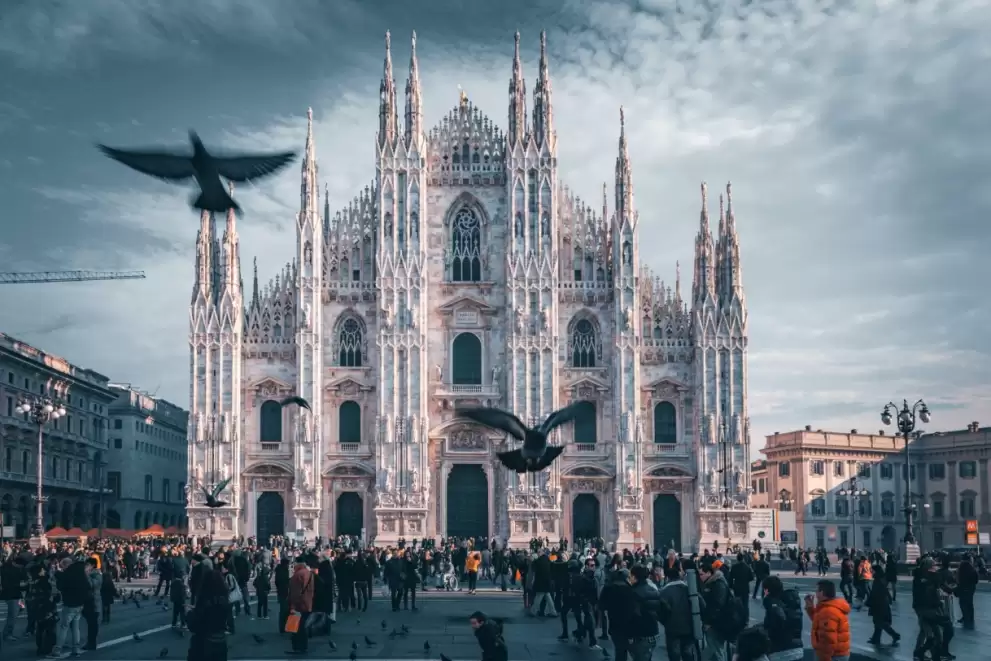The architectural style of the Duomo in Milan is primarily Gothic. The construction of the cathedral began in 1386 and continued for several centuries, resulting in a blend of architectural influences. While the overall style is Gothic, there are also elements of other architectural styles, such as neogothic and baroque, incorporated into its design.
The Gothic architectural features of the Milan Cathedral include:
-
Pointed Arches: Gothic architecture is characterized by its pointed arches, which can be seen throughout the exterior and interior of the Duomo. These arches create a sense of height and verticality.
-
Ribbed Vaults: The interior of the cathedral features ribbed vaults, a hallmark of Gothic architecture. These vaults distribute the weight of the roof and walls more effectively, allowing for taller and more open spaces.
-
Flying Buttresses: The Duomo employs flying buttresses, which are external arches that provide additional support to the walls. These buttresses help to counterbalance the thrust of the vaulted ceilings, allowing for larger windows and a more intricate interior design.
-
Ornate Decoration: Gothic architecture often incorporates intricate and detailed decoration. The Milan Cathedral is adorned with numerous statues, gargoyles, and spires, which embellish the exterior and add to its grandeur.
-
Stained Glass Windows: Gothic cathedrals are known for their elaborate stained glass windows, and the Duomo in Milan is no exception. The cathedral's windows depict religious scenes and allow colorful light to filter into the interior space.
Overall, the Milan Cathedral exemplifies the grandeur and verticality associated with Gothic architecture while also incorporating unique elements that make it a distinctive and iconic landmark.
